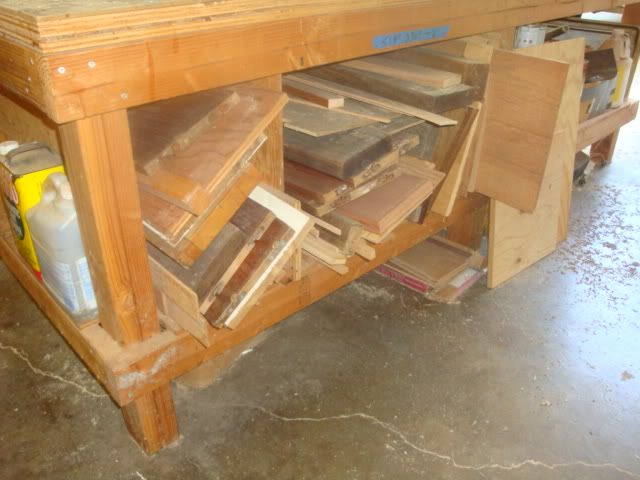I'm not sure if this has been a thread on here before, but I thought I would pose the question after consistently being unable to find scraps of wood I would like to use and forever hesitant to throw away tiny cut-offs. And it makes for a fun discussion.
So my questions to you are this:
Do you have a "structured" plan for saving smaill pieces?
Do you have a size limit before you will save a piece?
And of course, how do you save and sort all these chunks of wood?
If you can post pictures of your system, that would be great! Otherwise, let me know your personal guidelines. I'll get this started by showing my system, which started out with good intentions, but has degenerated into a mess.
I have four storage areas. (Bear in mind…this was my original plan years ago)
The first is for long boards and sheet goods:

The second is for anything over 18", but under 36:

Then, I have a small area under a wodkbench for anything under 18", but longer than 6". (I decided anything under 6" wan't worth keeping.) On the right, I separate any exotics:

Lastly, I always have a bucket for little cut-offs. These are the ones I most fret about when it comes to trash day:

So again, I'd like to revamp my system and would love to hear your ways of dealing with extra wood. Especially the little stuff. How do you part with it before it overtakes your shop?
So my questions to you are this:
Do you have a "structured" plan for saving smaill pieces?
Do you have a size limit before you will save a piece?
And of course, how do you save and sort all these chunks of wood?
If you can post pictures of your system, that would be great! Otherwise, let me know your personal guidelines. I'll get this started by showing my system, which started out with good intentions, but has degenerated into a mess.
I have four storage areas. (Bear in mind…this was my original plan years ago)
The first is for long boards and sheet goods:

The second is for anything over 18", but under 36:

Then, I have a small area under a wodkbench for anything under 18", but longer than 6". (I decided anything under 6" wan't worth keeping.) On the right, I separate any exotics:

Lastly, I always have a bucket for little cut-offs. These are the ones I most fret about when it comes to trash day:

So again, I'd like to revamp my system and would love to hear your ways of dealing with extra wood. Especially the little stuff. How do you part with it before it overtakes your shop?







